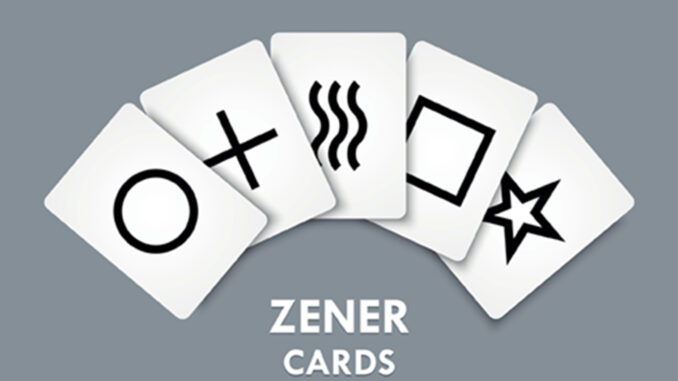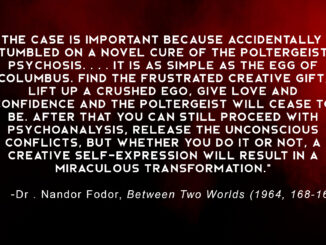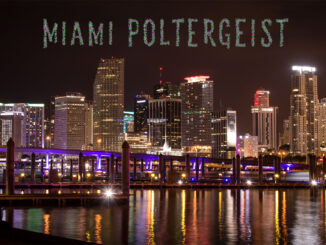
Psi research is statistically significant
The American Psychological Association, the APA, is the premier group for American psychologists. The APA publishes their journal, American Psychologist, which is topical, peer-reviewed and well-cited (Journal Impact Factor of 6.7).
In Volume 73, Volume 4 (May-June 2018) of American Psychologist published on 24 May 2018, Dr. Etzel Cardeña, the Director of the Centre for Research on Consciousness and Anomalous Psychology at Lund University, published a single author review entitled “The experimental evidence for parapsychological phenomena: A review.” Cardeña’s review, which is available as a PDF for $11.95, has the following abstract republished here in full:
“This article presents a comprehensive integration of current experimental evidence and theories about so-called parapsychological (psi) phenomena. Throughout history, people have reported events that seem to violate the common sense view of space and time. Some psychologists have been at the forefront of investigating these phenomena with sophisticated research protocols and theory, while others have devoted much of their careers to criticizing the field. Both stances can be explained by psychologists’ expertise on relevant processes such as perception, memory, belief, and conscious and nonconscious processes. This article clarifies the domain of psi, summarizes recent theories from physics and psychology that present psi phenomena as at least plausible, and then provides an overview of recent/updated meta-analyses. The evidence provides cumulative support for the reality of psi, which cannot be readily explained away by the quality of the studies, fraud, selective reporting, experimental or analytical incompetence, or other frequent criticisms. The evidence for psi is comparable to that for established phenomena in psychology and other disciplines, although there is no consensual understanding of them. The article concludes with recommendations for further progress in the field including the use of project and data repositories, conducting multidisciplinary studies with enough power, developing further nonconscious measures of psi and falsifiable theories, analyzing the characteristics of successful sessions and participants, improving the ecological validity of studies, testing how to increase effect sizes, recruiting more researchers at least open to the possibility of psi, and situating psi phenomena within larger domains such as the study of consciousness.”
The paper is certainly worth reading if you are scientifically minded. The article PDF can be purchased from the APA by clicking here.
If you are not willing to pay money for the article and you do not have access to this database, there was a wonderful synopsis on this article published on 02July2018 by Alex Fradera via the British Psychological Society Research Digest entitled Parapsychology Has Been Unfairly Sidelined, Claims a New Review of the Field.
This article distills the salient facts surrounding the academic research of parapsychology that are laid out by Dr. Cardeña in the original American Psychologist review and finishes with the question of whether parapsychology should be viewed as a positive psychological discipline for study.

T-Shirts, Mugs and More!
We now have t-shirts, tarot decks, ESP cards, coffee mugs, face masks, and much more merchandise available for purchase. Every dollar spent helps fund Paranormal Study!
In the review, Dr. Cardeña points out that “anomalous cognition” studies he has conducted has shown a .02 deviation towards positive significance when subjects were asked to guess a concealed card similar to Zener Cards. A .02 deviation was enough for Dr. Cardeña to note that there was a scientific significance beyond guessing, but it does fall short of accepted scientific significance of .05.
The Zener Card experiments were created by doctors J.B. Rhine and his wife, Louisa Rhine, at the Duke Parapsychology Laboratory (1919-1984) and consisted of 5 suits of cards. The Rhine’s funded research on several persons over the years and there were some real significant results; most notably the Pearce-Pratt experiments where Dr. Joseph Gaither Pratt conducted experiments with Divinity student Hubert Pearce over 37 sittings between August 1933 and March 1934. There were 1850 trials where Pratt set-up in the Physics Building and Pearce was positioned in the library. Pratt shuffled the cards and laid them facedown on a table Every minute, synchronized to a clock, Pratt would grab the top card and lay it facedown on a book; at the end of each minute, the card would be moved to a table and the next card laid on the same book in the same manner. In the library, Pearce would write down each card. When all 25 cards were run through, there would be a short break and the experiment would repeat with a new deck of shuffled cards. Over the 1850 trials with 5 suits, one would expect a 20% accuracy from guesses alone, or 370 correct guesses. Pearce was able to accurately guess 558 cards over the course of the trials. The chances of 558 accurate guesses is less than 1:100,000,000.
Dr. Cardeña also reviewed a fascinating new experiment based upon the Ganzfield Parapsychology Experiments that took place at the Koestler Parapsychology Unit at the University of Edinburg in the 1990’s. During these experiments in the 1990’s, a sender attempted to send a visual image to a receiver who was in a different location and blindfolded. This is very similar to the Ingo Swann method of Remote Viewing that was in used during the CIA’s Project Stargate. Dr. Cardeña’s review was of a new Ganzfield procedure where a receiver is blindfolded in a sound proof room and has to describe a movie clip which may be played in the future or simultaneously in a different location. The receivers were able to successfully view the clip without use of their senses with a remarkable statistical significance of .15.
The review also went into several other forms of statistically significant parapsychological experimentation, including measuring skin response before being shown an image, psychokinesis altering the outcome of dice rolls (another classic Rhine experiment), non-contact healing and other psi research.
Dr. Cardeña concludes that “overall the meta-analyses have been supportive of the psi hypothesis.” This echoes the work of Dr. Dean Radin who has been researching several disciplines of psi phenomena for over forty years and has published dozens of papers and six books over the course of his career. In his most recent book released in 2018, Real Magic: Ancient Wisdom, Modern Science, and a Guide to the Secret Power of the Universe, Radin writes how in a 2016 presidential address to over six thousand statisticians by the President of the American Statistical Association, the speech contained the line: “The data and support of precognition and possibly other related phenomena are quite strong statistically and would be widely accepted if it pertained to something more mundane.” Radin also writes how an overall meta-analysis of six classes of psi experimentation have achieved a Six Sigma level for the reliability of the experimentation results. Six Sigma qualification means that an effect has a 99.99966% degree of accuracy. It is one of the highest levels of accuracy and the chance of an error is roughly a 1,000,000,000:1. As a comparison, in Physics, if you can demonstrate a degree lower, Five Sigma, that is enough to win the Nobel Prize for evidence of a discovery.
The scientific evidence for psi is astounding. Unfortunately, most of the experimentation has been done on a bootstrap budget. Clinical parapsychology is a mere shadow of what it used to be with few universities willing to take on research fellows. This is why Dr. Cardeña’s paper is so important. Hopefully it will move some psychologists to realize that there is a lot of groundwork already established in the field of parapsychology and there should be more research dedicated to the field due to the high level of statistical significance of several psi experiments ranging over the last one hundred years.
If you found the content in this article to be of any value to your paranormal studies, please let us know in the comments below. Feel free to share this article with your friends as well because if you found it interesting, they might too.
Do You Want To Know More?
Our content creators also have podcasts that go much deeper into paranormal topics.
Tim Woolworth’s Walk in the Shadows, an episodic masterclass that consists of a deep dive into all things Fortean, paranormal and supernatural.
Rick Hale teams up with Stephen Lancaster in The Shadow Initiative where they explore various paranormal topics and discuss current paranormal news.
Please check these shows out and visit Paranormal Study social media to keep up to date on articles and all the things our authors are doing.




Be the first to comment